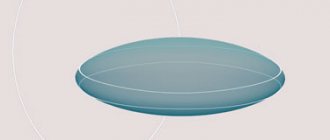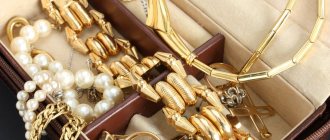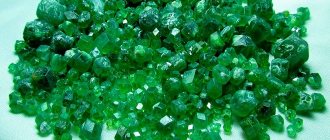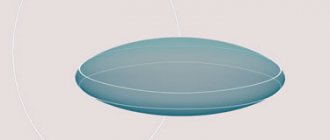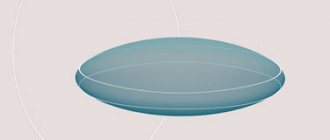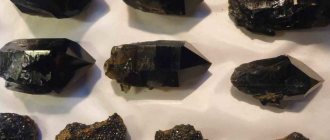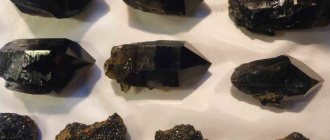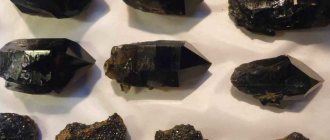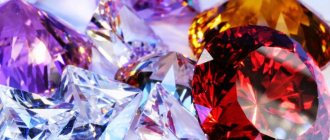Main Differences
The round cut is the most popular among people. This cut first appeared in 1919. This type of cut was invented to maximize the brilliance of a diamond. This diamond has 58 facets. The Princess cut is also designed to maximize the sparkle of the diamond, but it has a square or rectangular shape accentuated by sharp corners. "The Princess" was first published in 1960.
On the financial side, the round cut has a higher cost per carat compared to the princess cut. The differences also lie in such parameters as the shape of the edge and the ability to reflect light.
Shape and its characteristics
The Princess cut is a square diamond shape whose facets reflect light and sparkle just like a classic round cut diamond and are therefore ideal for those who love the play of light and sparkle of round stones but prefer a square shape. It was first introduced in the 1960s. Its predecessor was the Baryon cut, invented by Basil Watermeyer. However, the Baryon cut is similar to the Radiant cut, but with the corners cut off.
The actual shape of a princess cut diamond follows that of an octahedron, a common shape for a rough diamond crystal. Therefore, this shape allows cutters to produce diamonds with minimal loss of precious material, resulting in a lower cost of production per carat and, therefore, a lower price (compared to the round cut) for buyers.
Unfortunately, many manufacturers cut their crystals in such a way as to maximize the yield of the finished product, sometimes sacrificing the beauty of the reflection of light in the final stone: the brilliance of the diamond. The most popular diamond grading organization, the Gemological Institute of America (GIA), does not evaluate the quality of the Princess cut and, therefore, it is difficult for the consumer to evaluate this quality. The only organization that assigns sparkle grades to stones based on the cut quality of Princess diamonds is the American Gem Society Laboratory (AGSL).
The cutting and faceting of crystals to maximize profit at the expense of beauty is clearly demonstrated in image #1, which shows how the octahedron crystal is divided into two princess-cut diamonds, one larger than the other. You can see (1A) how the cutter maximized the yield of the finished product (minimized waste), while the picture next to it (1B) shows us that if the same crystal were cut and faceted to produce more beautiful stones, this would produce more valuable waste material.
Image #1:
Demonstrating the difference in poor cut and cut quality to maximize the yield of the final Princess cut (1A) product compared to the ideal Princess cut stones maximizing brilliance (1B). (Images courtesy of Pricescope.com/AGSL)
Let's say the rough diamond weighs 3 carats. The traditional way to cut this 3 carat octahedron is through the center, yielding 2 one carat princess cut stones. Thus, these diamonds would provide maximum yield of the finished product, minimum waste of material and, being single-carat stones, would bring maximum profit to the cutter (stones are processed taking into account their weight).
But if the same octahedral crystal is cut just above the center, then we end up with one stone weighing a little more than one carat and a second one weighing approximately 0.25 carats, or so - the second is much smaller than the first. Such cutting and faceting would comply with AGSL standards for creating AGS O Princess grade stones and would maximize their brilliance and brilliance, but would also result in more waste of valuable raw material and a proportionately lower price for the two stones compared to the one-carat diamond option.
Another important characteristic of princess cut diamonds is their tendency to chip off their pointed ends. The sharp ends are their weakest point. Therefore, when installing a stone into a piece of jewelry, the jeweler will protect these ends either with fork posts or special V-shaped prongs. Some diamond cutters place a tiny edge on the corners, called a bevel, to provide more protection. See illustration in image No. 2.
Image #2:
Some princess cut stones have facets (also called bevels) on all four of their corners. They provide greater reliability to the diamond, taking into account the risk of chipping of these sharp corners. (Image courtesy of pricescope.com/AGSL)
Size and cut
The two types of cuts are similar in that both were designed to add more sparkle to a diamond. The huge difference between diamonds of different cuts is the number of facets. A round diamond has 58 facets. As for the “princess,” the number of facets of such a diamond may vary, although initially the number of facets was 58.
As for the visual difference, if you look at both diamonds from above, the round one will look significantly larger compared to the “princess” one, even with the same carat weight.
How to choose a Princess diamond?
This is a short guide to choosing a beautiful princess cut diamond, i.e. square diamond.
So, there are always some reasonable limits on the characteristics so as not to spoil the visual beauty of your diamond. In stores they will try to sell you more expensive things that are inexpensive. My main goal is to find you a beautiful diamond within your budget.
Color.
The color gradation of princesses is the same as that of round diamonds. The highest indicators are DE. Optimal - FG. The economical option is H. Among the unusual cuts, the princess cut is one of the brightest in terms of light refraction and brilliance, so we can allow color imperfections to be hidden in radiance. You should only go below the H color if you are looking for a light yellow diamond.
Quality. Purity.
This indicator is responsible for inclusions in a diamond. Most of the inclusions at the beginning of the table are not visible to the naked eye, without a magnifying glass. My recommendation is VS1-VS2. And for a limited budget - SI1, but with inclusions on the sides or bottom surface. So that when setting into jewelry, the stone is perfect.
Cut.
GIA certificates for princess cut diamonds do not have a cut quality rating scale. There are certificates from AGS that rate the cut from 0 to 10, with 10 being the worst and 0 being the best. But there are catastrophically few diamonds with such certificates. There are even fewer companies that work with them. Therefore, professionals evaluate the quality of princess cuts based on standard proportions. Buyers can only trust their jeweler.
Carat.
The size of a diamond and its carat weight are not always directly related (I recently talked about this in detail in a post about carats). There are standard “princess” sizes that everyone follows (3 photos). In reality, the client is looking at the top part of the diamond, which is visible in the jewelry. It is important here that the stone does not have a heavy bottom, where all the carats will go, but is proportional. The cut is responsible for this.
Certification.
Only certificates from the international independent laboratory GIA. And be sure to check the diamond number and the certificate number.
Price.
Like all non-round diamonds, princesses are about 30% cheaper than classic round diamonds. For comparison, diamonds of the same characteristics weighing 0.50 carats: Circle - $2,050, Princess - $1,450.
Diamonds 1 carat: Circle – $10,000, Princess – $7,000
Who prefers square diamonds? Who wants classic round ones? Did I manage to lure classics lovers to the side of the “princess”?
Write in the comments.
Shine and color
As stated earlier, both cuts are designed to add more sparkle to the diamond. However, according to diamond lovers, the round has a slight advantage over the princess. A round diamond has more fire due to the number of facets, so jewelry with such a diamond looks more vibrant.
As for color, the “princess” shows colors more easily. If a princess cut diamond will be set in a platinum or white gold piece, it is best to choose a GHI color diamond. For yellow gold items, the “princess” JK color scheme is perfect.
A round diamond has more facets, which prevents it from showing much color. For platinum and white gold items, choose a round diamond in the HIJ color range. The KLM color range is perfect for yellow gold items.
The dignity of jewelry with diamonds “Princess”
The undoubted advantage of such jewelry is its more affordable prices compared to jewelry with a classic round shape. And the point here is not the quality of the precious stones themselves; for the “Princess” they use the largest and purest stones. The shape of such a diamond is as close as possible to the natural shape of the original diamond nugget, and during its creation it loses less of its original weight.
Look at the photo of the Princess cut of the diamond – it is this shape that gives the gemstone its special qualities:
Princess cut diamond rings are traditionally created in white gold or platinum, which highlight the purity of the white stones.
More avant-garde models made of colored stones look great in combination with rose or red gold. But what remains unchanged for such jewelry is the method of attaching the stone itself, which you should definitely pay attention to when choosing. Its sharp corners must be “closed” and protected by a reliable frame - this rule has become the signature style of such jewelry.
Notice how subtly the colors of the metal and stone were chosen for the Princess diamond ring in these photos:
"Princess" and its analogues
There are four types of square cut diamonds – radiant, asscher, emerald and princess. To a person who does not really delve into the types of cuts, these varieties of square cuts will seem the same. If you look at a square diamond from above, you can see with the naked eye that all its faces are the same.
The radiant cut has greater depth compared to the princess cut. Although this cut is a square cut, it has rounded edges, which allows it to reflect light in a special way. This property makes the diamond more brilliant. The quality of color retention allows the diamond to exhibit a linear pattern of light.
Emerald and Asscher cuts also have linear facets, which add sparkle to the diamond. For such a cut, depth is not important, as, for example, for a “princess” cut. The “emerald” cut perfectly conveys color, so for products made from any type of precious metals it is best to choose the H range color range. Any product with an “emerald” cut will have a yellowish tint. The Asscher cut has a low level of brilliance, making it unable to hide external imperfections.
The cushion cut has the most similar properties to the princess cut. There is only a visual difference between them. If you look at the cushion from above, such a diamond will look more like a pillow with round edges than a square.
Octagonal shaped diamond "Radiant"
The Radiant diamond is rectangular or square in shape with an octagonal outline and is a combination of step and brilliant cut. The Radiant Diamond combines the elegance of the Emerald and the beauty of the Princess. The corners of the diamond are cut to increase brilliance.
Diamond "Radiant" octagonal cut sixty-five-sided
A square or rectangular diamond creates the illusion of smaller fingers, making it an ideal choice for those who want a shortening effect. The Radiant diamond is a rather rare stone due to the specificity of its cut, but is often found among colored diamonds as it improves their color.
